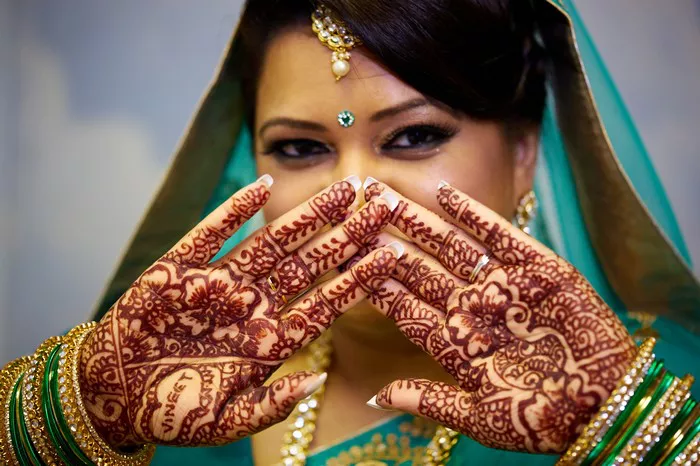The image shows a woman with intricate henna designs applied to the palms of both her hands. The henna is a deep reddish-brown color and is applied in a very detailed and symmetrical pattern that covers the entire palm and fingers. The designs include intricate floral motifs, swirls, and lines, creating a visually striking and complex pattern. The henna is applied in a traditional style, with a focus on the beauty and artistry of the design.
Henna, also known as Mehndi, holds significant cultural and symbolic meaning in many South Asian traditions, particularly during weddings.
Here are some possible meanings:
Good luck and blessings: Henna is often applied to the hands and feet of brides as a way to bring good luck and blessings for a happy and prosperous marriage.
Beauty and adornment: Henna is seen as a form of adornment and is used to enhance the beauty of the bride.
Protection: In some cultures, henna is also believed to have protective qualities. The designs are thought to ward off evil spirits and bring good health.
Festive occasion: The application of henna is a significant part of many South Asian wedding celebrations and symbolizes the joy and festivity of the occasion.
See Also: Blue butterfly and flower tattoo on shoulder for women
Family and community: The application of henna is often a communal activity, with women gathering together to apply the designs to each other. This strengthens the bonds of family and community.
Overall, the henna designs on the bride’s hands represent a beautiful blend of tradition, beauty, and symbolism. They mark a significant milestone in her life and are a testament to the rich cultural heritage of South Asia.

